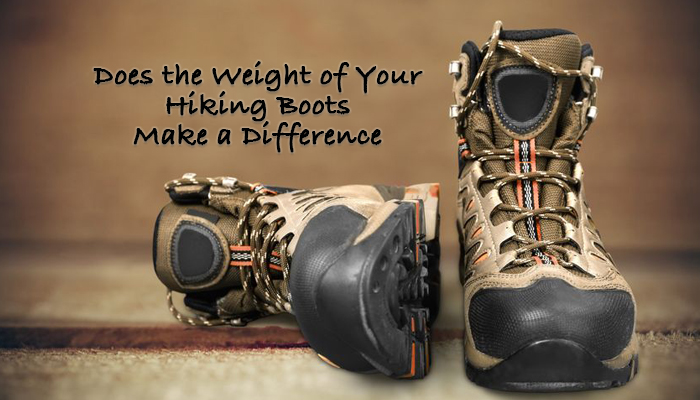
There is no question that weight slows you down when hiking, and where you carry the weight while hiking, makes a bigger difference than you may have realized.
In 1983, the United States Army conducted a study titled “The energy cost and heart-rate response of trained and untrained subjects walking and running in shoes and boots” (Army Research Inst Of Environmental Medicine, 1983).
The study found that a very small increase in the weight of your shoes added up to a significantly higher expenditure of energy when walking. The adage “one pound of added weight to your feet equals five pounds of weight on your back” may be credible. The weight of your hiking shoes or boots can make a difference.
A heavy boot or shoe is as a rule considered a good thing, however. Heavy soles protect the feet from stone bruises, nails, and other sharp objects while the heavy leather uppers help protect against snake bites, sharp sticks, and so forth, but all that protection comes at a cost, however.
Often times, people buy hiking boots to help support their ankles and feet, to prevent twisted ankles and supposedly, to prevent aching feet, good arch support in other words. However, if your boot or shoes do all the work your ankles, feet, and legs will essentially never be able to. They may not get stronger or strong enough, so you can reduce the weight of your hiking shoes.
Your Shoes/Boots Are Based On Your Activity
1.) The so-called trail runners are made for those that literally run woodland trails, as opposed to road-running shoes that are designed to run on flat terrain like sidewalks, and asphalt or concrete roadways. Trail runners typically have a stiffer sole to help protect against stone bruises, and usually have a toe protector to stop those annoying and sometimes serious toe stubs.
Trail runners are not designed for steep, slippery, or very rough terrain. They would be ideal for those hikers that stay on well-defined and relatively even hiking trails. If you wear a lightweight runner, you can add more weight to your pack without noticing the difference, more food, and water for example. Trail runners typically rest below the ankle, so do not expect any protection from snakes, heavy brush or sharp branches along the ground.
2.) Hiking shoes are made for rougher terrain, but all of the added layers of protection add up to more weight. Hiking shoes can be the all around shoe for that outdoors person who has over the years developed foot and ankle strength because the shoes do not offer much if any protection from twisted ankles. Experience counts, because the shoe is heavier so your backpack load will have to be lighter. This means you carry minimal supplies, but have the skill and knowledge along with the essential tools and materials that allow you to replenishing along the trail.
3.) Hiking boots are for those concerned about twisted ankles or for those that have had injuries in the past that make you susceptible to sprained ankles. The soles are designed for slippery terrain and most quality boots offer protection from water and cold weather. Boots will go above the ankle, and so offer, some protection from snakebites, sharp branches, and other objects. They are heavier in comparison, of course so keep this in mind when choosing.
Unlike a backpack, your boots or shoes cannot be stripped down to lessen the weight once you have them home. The only realistic thing you can do is to honestly evaluate your capabilities and where you plan to hike, so you can purchase the boot or shoe that fits your lifestyle and still offer the protection your need, while reducing the weight in some cases.
To be prepared, it may be a good idea to have a pair of trail runners and a pair of hiking shoes or heavier boots in your vehicle or even in your backpack so you can adapt to the situation. If you get stranded in a vehicle, for example, and have to hike out, you want the right footwear for the terrain, and keep in the mind the terrain can change quickly.
The more you hike the stronger your feet, legs and ankles will become, so you can lessen your dependency on the heavier boots if a twisted ankle is your main concern.
ARMY RESEARCH INST OF ENVIRONMENTAL MEDICINE. (1983). Retrieved 2016, from http://oai.dtic.mil/oai/oai?verb=getRecord&metadataPrefix=html&identifier=ADA131420